detail profile jean max
Peran Yang Di Mainkan Jean-Max
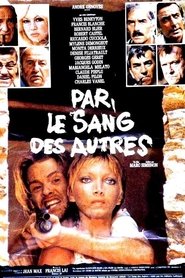 In a little French town everything...
In a little French town everything...Par le sang des autres 1974
In a little French town everything goes on as usual and people seem friendly and good-natured, until the day two women arrive from Paris. A man gets off the same bus, and that very night he seizes the two women and asks for the most beautiful woman in town as their ransom. After the initial shock, the mayor, his brother, the prefect, the police, and the gendarmerie gather around the house where the two woman are imprisoned. It will be a test for everyone and each of them will show his/her real stuff: hypocrisy, meanness, or humanity concealed under their provincial respectability.
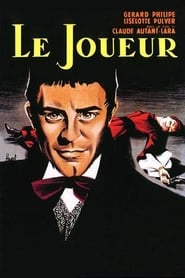 In 1866 a young Muscovite named Alexei...
In 1866 a young Muscovite named Alexei...The Gambler 1958
In 1866, a young Muscovite named Alexei Ivanovitch arrives in Baden Baden, then the gambling capital of Austria, and is soon engaged by General Zagorianski to look after his children. Alexei discovers that his employer is a compulsive gambler who has been almost ruined by his addiction. The only money the General has is provided by the Marquis de Grieux, an adventurer who intends to marry Zagorianski’s sister, Pauline. In doing so, de Grieux hopes to profit from the vast inheritance that will come the General’s way from his Aunt Antonina, who is presently very ill. Alexei is appalled by this society which lives only for money. He loves Pauline and wants to take her to a healthier place, but when she refuses to marry him, he begins to gamble at the casino…
 In a maternity hospital young single...
In a maternity hospital young single...Children of Love 1953
In a maternity hospital, young single mothers are accompanied by social worker Hélène Lambert, who tries to make them aware of their new responsibilities, while Dr. Baurain stresses the importance of their moral and sexual education. They come to the aid of several young women: one who would like to give up her child to a couple applying for adoption, another who, after the death of her first baby in dramatic circumstances, is expecting a second, and many others.
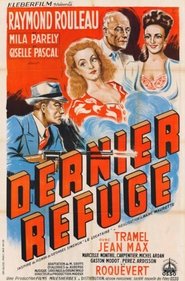 Philippe and Sylvie have to do...
Philippe and Sylvie have to do...Last Refuge 1947
Philippe and Sylvie have to do with Alvarez, a dangerous gang leader. They break up with him and commit robbery and murder. Sylvie suggests that Philippe take refuge in his quiet family. His younger sister Antoinette attracts and charms Philippe and excites the jealousy of Sylvie who informs Alvarez. The police get involved and Philippe is killed during a merciless fight.
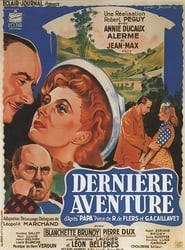 Comte de Larzac an aging seducer...
Comte de Larzac an aging seducer...Dernière aventure 1942
Comte de Larzac, an aging seducer, leaves Paris for Lannemezan. Accompanied by his friend Charmeuil, he goes there to acknowledge the paternity of Jean, a twenty-year old young man who knows nothing about his biological father. Jean, after falling for Jeanne, the daughter of a farmer, now courts Georgina, a middle-class woman of Romanian origin. After Father Jocasse has told Jean that he is Comte de Larzac's son, the young man follows his father to Paris. But he finds it hard to comply with the usages of high society and when his father refuses to consent to his marriage with Georgina, he returns to Lannemezan. Georgina is so upset by the count's refusal that she comes to see him and tells him very candidly about her past life. Moved by her plea, de Larzac drives her back to Lannemezan so that she can marry Jean. What was not expected is that, during the trip, they discover they are close to each other.
 In 1917 in a small village in...
In 1917 in a small village in...Deuxième bureau contre kommandantur 1939
In 1917, in a small village in the North, Abbe Gaillard is suspected by the Germans of facilitating the escape of French and Belgian soldiers. A false alibi makes him innocent and he can thus continue his mission, thanks to the devotion of an Alsatian who, in enemy uniform, obscurely serves his country.
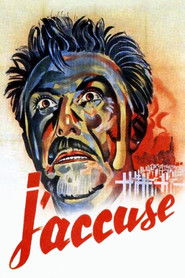 After serving in the trenches of...
After serving in the trenches of...I Accuse 1938
After serving in the trenches of World War I, Jean Diaz recoils with such horror that he renounces love and personal pleasure to immerse himself in scientific research, seeking a machine to prevent war. He thinks he has succeeded, but the government subverts his discovery, and Europe slides with seeming inevitability toward World War II. In desperation, Diaz summons the ghosts of the war dead from the graves and fields of France to give silent, accusing protest.
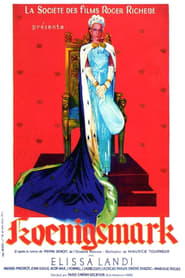 Koenigsmark is a 1935 BritishFrench drama film...
Koenigsmark is a 1935 BritishFrench drama film...Crimson Dynasty 1935
Koenigsmark is a 1935 British-French drama film directed by Maurice Tourneur and starring Elissa Landi, John Lodge and Pierre Fresnay. The film is based on the novel Koenigsmark by Pierre Benoît. It's sets were designed by the art director Lucien Aguettand. The film was known in the United States as Crimson Dynasty.
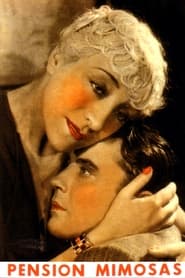 Mr and Mrs Noblet run a...
Mr and Mrs Noblet run a...Pension Mimosas 1935
Mr. and Mrs. Noblet run a boarding house on the French Riviera. One day, they are led by circumstances to welcome a little boy Pierre, whose father is in jail, into their home. Which makes Louise Noblet all the happier as she can't have children herself. But, after a while, Pierre's father is released from prison and reclaims his son... Time passes and Pierre, now a young adult, lives in Paris more or less on the wrong side of the law. He has a mistress, Nelly, who does not say no to other men's money... Louise, who still loves Pierre as her own son, wants only one thing - to help him get by.
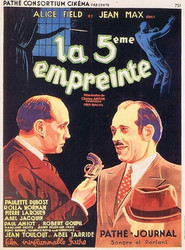 Jacques de Nisson a rich man...
Jacques de Nisson a rich man...La cinquième empreinte 1934
Jacques de Nisson, a rich man, has a new mistress, Lucie Cavelier. Which does not prevent him from courting Florence, the wife of his lawyer friend Forestier. One day, Jacques is found murdered and chief-inspector Candély is sent on the spot to investigate. Jean, the victim's butler, Lucie as well as Florence are suspected in turns but the real murderer is finally identified thanks to his fingerprints.
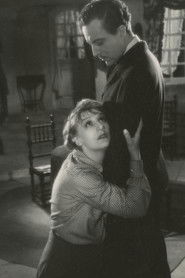 During a transvestite ball a young...
During a transvestite ball a young...Sapho 1934
During a transvestite ball, a young provincial meets Fanny Legrand. A great love is born between them. Later, the young man learns that Fanny was a great coquette. He leaves her, he comes back, he forgives. But when he embarks for America, Fanny does not follow him.
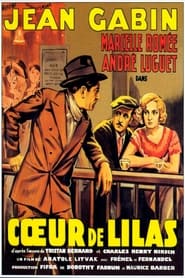 Also known as Lilac this early...
Also known as Lilac this early...Lilac 1932
Also known as Lilac, this early Anatole Litvak-directed talkie was based on a play by Tristan Bernard and Charles Henry Hirsch. The story bears traces of the Bertold Brecht-Weill piece The Threepenny Opera, with heroine Lilac (Marcelle Romeo) consorting with the criminal scum of Paris. Lilac falls in love with a handsome detective (Andre Luguet), but he doesn't let his emotions stand in the way of his duty, and in the end he reluctantly turns her over to the authorities. At $120,000, Coeur de Lilas was one of the most expensive movies to come out of France in 1931, but it more than made back its cost at the box-office.
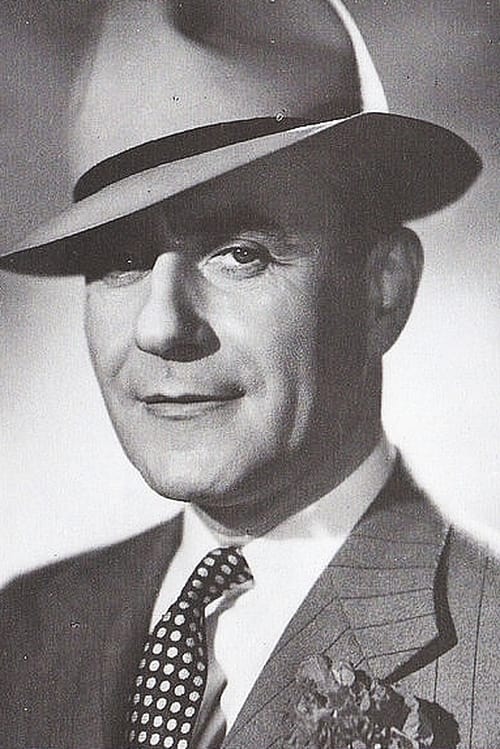
 Go Paquet aka The Gorilla breaks...
Go Paquet aka The Gorilla breaks...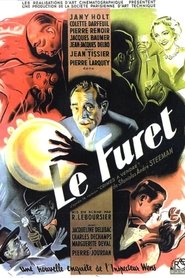 A mysterious figure signing himself The...
A mysterious figure signing himself The...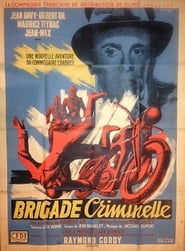 After the discovery of two murders...
After the discovery of two murders...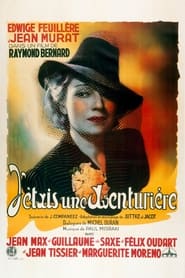 Old friends of Vera Vronsky remind...
Old friends of Vera Vronsky remind...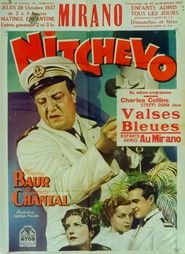 A commander suspects his wife of...
A commander suspects his wife of...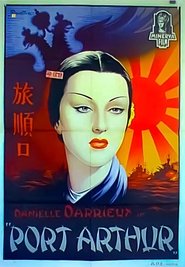 Frenchlanguage remake of Port Arthur 1936 espionage...
Frenchlanguage remake of Port Arthur 1936 espionage...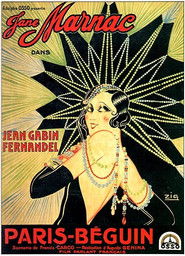 In order not to compromise the...
In order not to compromise the...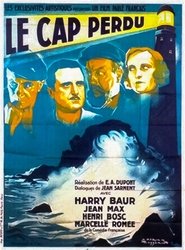 Bored with her life with her...
Bored with her life with her...